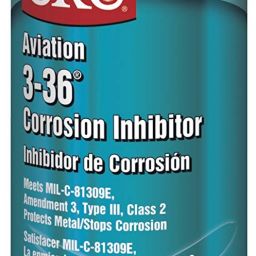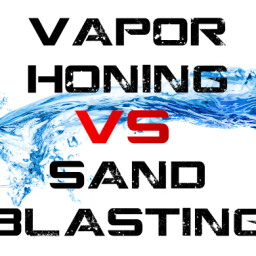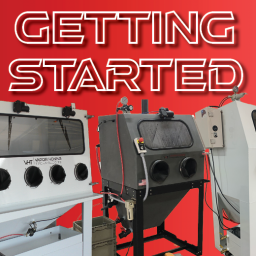Vapor Blasting vs Soda Blasting: An in-Depth Process Comparison
Are you in the market to hire blasting services but have no idea which is right for your company?
After all, the words “vapor” and “soda” and “glass beads” along with all of the other types of blasting methods can be overwhelming.
Don’t worry, you aren’t alone. Most people have no idea what the true differences between vapor blasting VS soda blasting. If you do know all about it, maybe you can’t decide between vapor blasting VS soda blasting.
Whichever it is, we assure you this comparison guide details the two so you can make an informed decision about which to use!
Types of Blasting Techniques
There are several blasting techniques, all with their specifications and uses, from which you can choose.
These techniques are:
- Vapor (or wet) blasting
- Glass bead blasting
- Sandblasting
- Soda Blasting
- Media blasting
- Vapor Blasting VS Soda Blasting
People usually choose one of these blasting techniques to de-contaminate a surface, remove paint, create a shiny finish, and even fix up cars.
What Is Vapor Blasting?
Vapor blasting comes with a variety of names. The most common are wet blasting or slurry blasting. You can use this method to de-contaminate or create a textured finish using abrasive blasting media mixed with pressurized water.
Blasting media includes several different things:
- Aluminum
- Glass
- Glass beads
- Garnet
- Dry ice
- Walnut shells
- Coconut shells
This media mixes in something called a blasting cabinet. From there, attach a nozzle that propels the slurry mix of water, abrasive media, and pressurized air onto the appropriate surface.
Is Vapor Blasting Safe?
Each blasting technique has its unique properties. Because of this, OSHA has set up fact sheets in regards to safety regulations.
The abrasive blasting fact sheet incorporates all risks that abrasive blasting poses to workers.
Blasting techniques are incredibly pressurized and used at high acceleration, allowing for an alarming amount of dust and debris to kick up around the worker.
It creates a highly toxic environment when you mix this with the media slurry in the vapor blasting.
Silica
If inhaled, silica-based media can cause silicosis (a fatal lung disease), as well as lung cancer. By breathing silicon crystals, workers will develop breathing problems that last their entire lives and lead to fatalities.
Coal, Copper, and Garnet
If inhaled, these media slags have also proved to cause lung cancer. Animal testing shows that since some of these can contain silica, they also cause silicosis.
These slags can contain extremely toxic materials such as arsenic and beryllium.
Steel
Steel media might be one of the safest to use in abrasive blasting because it causes less lung damage over time. However, there is always the possibility of severe health complications. Also, in vapor honing you will need to use stainless steel shot due to the rusting that will occur if using steel shot.
How To Protect Workers?
As mentioned, blasting techniques come in a variety of media, slurry, coatings, and working conditions. Safety procedures may shift depending on what type of blasting method is in use and the placement of the worker.
However, there are several common safety measures you can take to ensure the safety of your workers:
- Provide proper PPE (or personal protective equipment)
- Give workers proper respiratory protection
- Train your workers on abrasive blasting safety measures
- Practice good hygiene
- Add ventilation
- Use barriers such as curtains to isolate
- Use blast cabinets
- Use the least toxic abrasive media
- Schedule blasting at a time when no one else is around
- Do not blast windy conditions
- Vacuum up dust afterward
By considering these few general safety measures, you protect your workers and those around them from serious injuries or disease.
What Do You Use Vapor Blast?
Sensitive Surfaces
If you have a surface that would be too sensitive to blast abrasively, you can wet blast it with a softer media form. Wet blasting with water and glass beads would be the trick to clean and polish a surface without destroying the surface. Using a mixture of water and aluminum oxide would be great for coating prep without damaging the surface and diminishing tolerances.
Automobiles and Car Parts
Many people and auto mechanics will hire vapor blasting to clean or restore cars and car parts. Vapor blasting will effectively remove rust, paint, and other coatings.
Soft Metal
For sensitive metals, blasting with too much abrasive media can cause friction. If you blast with water mixed in with the slurry, this keeps the heat down, so the sensitive metals don’t warp.
Aerospace
Vapor blasting parts for engineering and aerospace will keep oxidation at bay. It will also decontaminate the surfaces and eliminate carbon.
Cost of Vapor Blasting
Cost is going to depend on the service you are hiring. You can blast anything from small pieces to large construction sites. Due to this, most services do not charge a flat service fee.
If they did, you could have to pay more to have one piece of equipment blasted. Vice versa, you could also pay less to have a large machine vapor blasted.
Most services charge between $25-$50 hours. Though these prices may fluctuate, pricing depends on what you want to blast (such as having paint or rust removed) and how many parts you need to blast.
Pros of Vapor Blasting
Reduce Dust
Vapor blasting is less likely to kick up dust as dry blasting will. Less dust means fewer chances for a safety hazard. The worker can see more clearly.
They also won’t be inhaling as much debris and media as they would with other blasting technologies.
Clean as You Blast
Since pressurized water accompanies the media slurry, you can clean the surfaces as you blast at the same time. Vapor blasting limits the amount of work because the workers won’t have to spend extra time cleaning afterward.
Less Media Use
Other blasting techniques use a large amount of media in their application. Since vapor blasting uses water, you won’t have to pile in the mixed media slurry to get the job done.
Equipment Lasts Longer
Again, vapor blasting uses fewer media, which means the abrasive effect on the machine decreases. Other blasting techniques, such as sandblasting, take a toll on the equipment and reduce its lifespan.
Vapor blasting will be much gentler on the nozzle and blasting cabinet you use.
Cons of Vapor Blasting
More Expensive
All blasting equipment is pricey. However, vapor blasting equipment can be more costly than other blasting methods.
If you are beginning in the blasting business, you can expect to pay anywhere from $1,000- $45,000 for a standard machine.
Flash Rusting
Vapor blasting may remove rust from metals, but a rust inhibitor is required to prevent future flash rusting before re coating. You could vapor blast rust away and, in a few days, it could re-rust.
To avoid flash rust, you must apply a special coating immediately after you finish blasting.
Once You Start, You Can’t Stop
Since there is water mixed with media in your equipment, it could begin to transform into an unpleasant mixture if left sitting. There are some additives you can add to the sump of a machine to prevent hard packing but it is not advised to leave a machine sitting for months without use.
What Is Soda Blasting?
No, soda blasting has nothing to do with soda pop. Instead, this form of abrasive blasting method uses sodium bicarbonate, or baking soda, mixed with either air or water.
This type of blasting is less abrasive than other methods. So, it won’t damage any surfaces or leave them looking rough.
Is Soda Blasting Safe?
Where sand blasting can lead to serious health issues down the road, soda blasting is a healthier option especially if used in a vapor blasting machine.
Since this method is chemical-free, there is no risk for deadly toxins, fumes, or anything that will cause a skin burn.
Still, workers should wear the appropriate PPE and comply with standard safety procedures.
Cost of Soda Blasting
Soda blasting costs are more than regular vapor blasting. The reason for this is because baking soda cannot be re-used. Therefore, the workers use more media than they would with vapor blasting.
What Can You Soda Blast?
You can use soda blasting for plenty of projects. Since it is less abrasive to surfaces, it is the optimal choice for people looking to restore furniture and repair damages, prep for coatings or just general cleaning of a surface.
Fire Damage Repair
Let’s say you experienced a house fire and have smoke damage either in the house or on household items. Soda blasting is effective in taking away smoke and fire damage from personal items.
Since it is so soft, you can rest easy knowing there’s no damage to your items in the process.
Restoring Historical Items
Historical items such as cars, wood furniture, or other old appliances and items can be soda blasted. Historical artifacts are extremely fragile, so they will need a gentler type of blasting power that poses no risk of damage.
Maritime Cleaning
Many times, people will hire soda blasting to clean boats and ships. Naturally, ships collect grime from the ocean. This grime builds up over time and affects the health of the ship.
Soda blasting will clear grime, and rust, off of the boat to get it looking new again.
Removing Paint From Asphalt
When you remove paint from the road, you will want to do so in a way that doesn’t affect the road. When construction workers need road lines removed, they will blast them with soda to remove the paint.
Pros of Soda Blasting
No Flash Rust
When soda blasting is over, the baking powder component will remain as a powdery residue on the item’s surface. This prevents flash rust from setting in after the blasting project.
You also won’t have to rush to apply a special coating to the item.
Eco-friendly
Baking soda and water are the only ingredients in soda blasting. No extraneous material is being sprayed, such as silica and other toxins mixed in with the dust that kicks up during the blasting process.
What’s more, baking soda is 100 percent biodegradable.
No Warping
Since soda blasting causes no heat, there is no danger of warping. You can apply this method to sensitive metals without fear of ruining, damaging, or warping the item(s).
Cons of Soda Blasting
Will Collect Places
Baking soda is messy. Even after the project is over, it tends to collect in nooks and crannies. This tends to hinder the coating process when you go to add the finish.
Not Recyclable
Not being recyclable could be the most costly soda blasting con. The reason being, not being able to re-use media costs more money. As with vapor blasting, you can re-use the slurry for another project.
Baking soda is a one-time deal, so you will have to buy a ton of product.
Surface Profile
Baking soda’s non-abrasiveness is both a pro and a con. While it adds a kinder touch to surfaces, it may also not be enough. Whatever the item or structure you are blasting may be, the surface may need profiling.
This is something baking soda will fail to do because of the soft application process.
Could Kill Nearby Foliage
Soda blasting is eco-friendly in the sense that poisons and toxins are not sprayed everywhere. However, if there is neighboring foliage, baking soda could kill it.
After soda blasting, you should always clean nearby plants.
A Final Thought on Vapor and Soda Blasting
When looking into the pros and cons of vapor blasting VS soda blasting, you may not see too much difference. Be aware that even the most minute characteristics can make a big difference to your surfaces.
Vapor Honing Technologies offers a large selection of the best blasting materials you can buy.
Our selection includes high-quality blasting cabinets and an array of media materials for all of your wet blasting purposes.
If you are in the market for quality blasting items or want more information on the different types of blasting, please take a look at our informational blog today!








